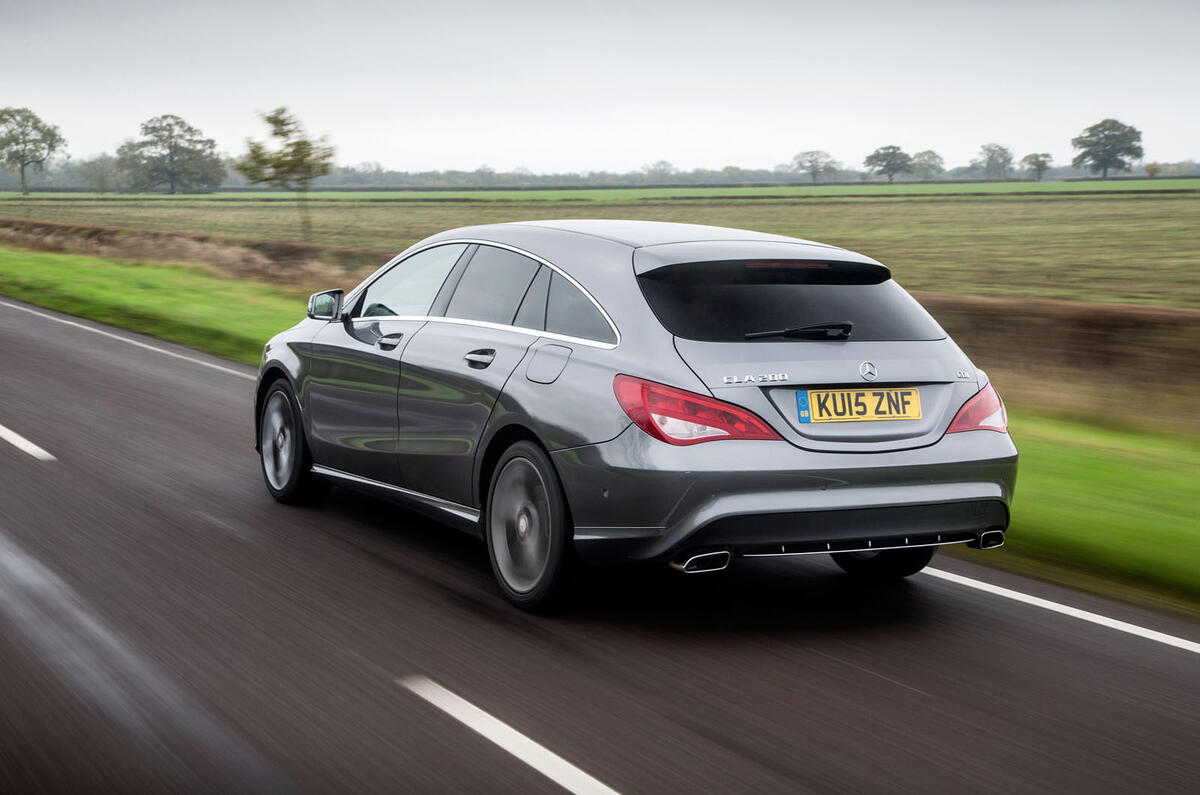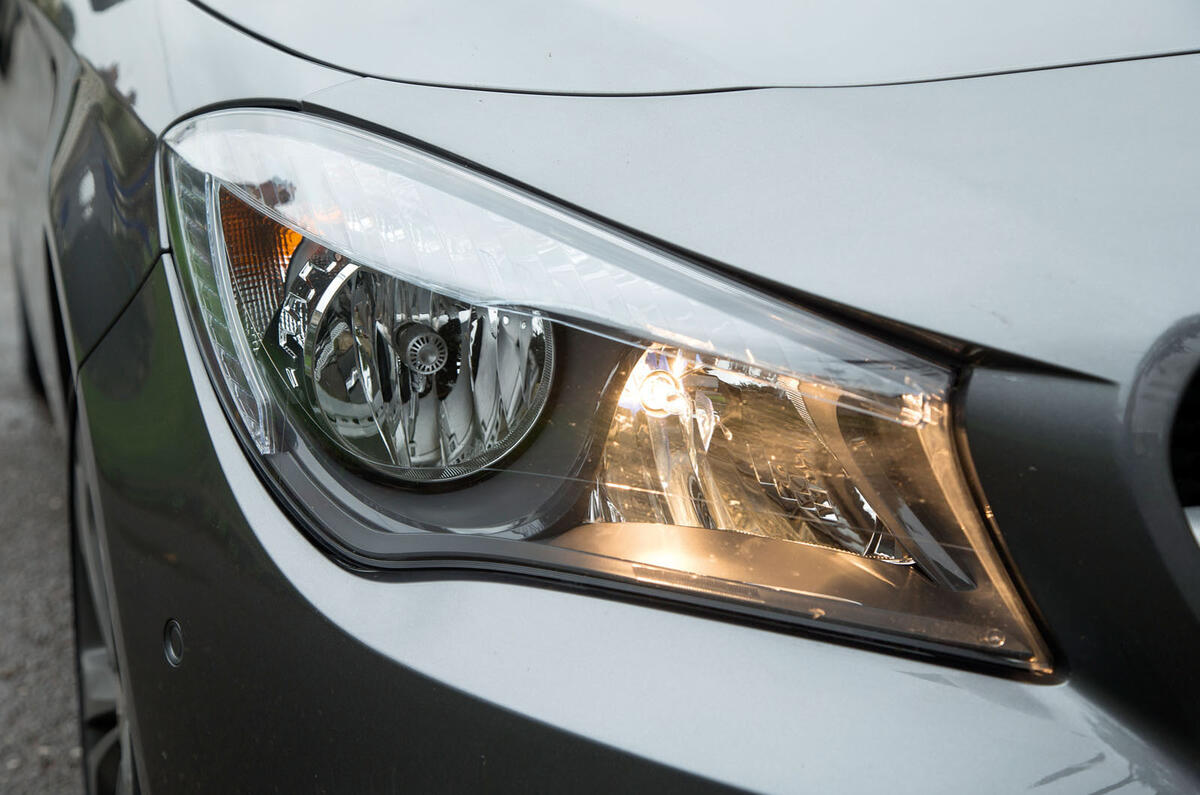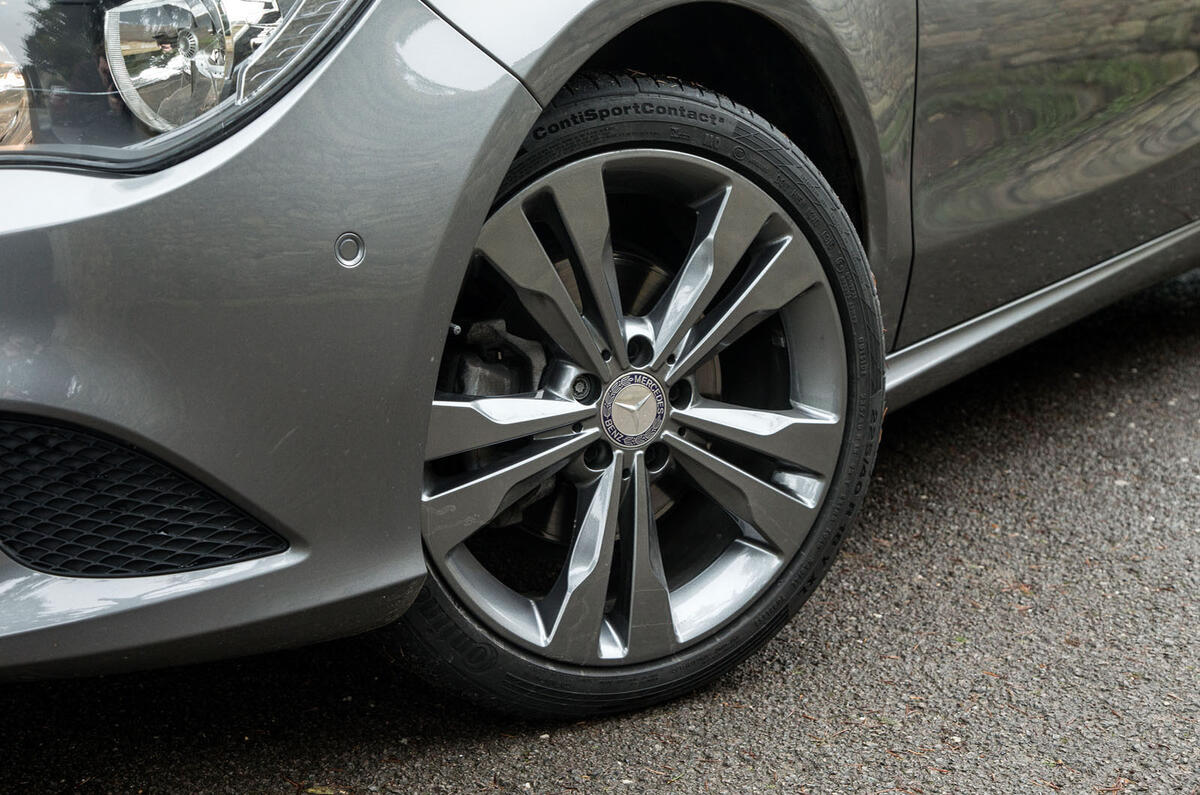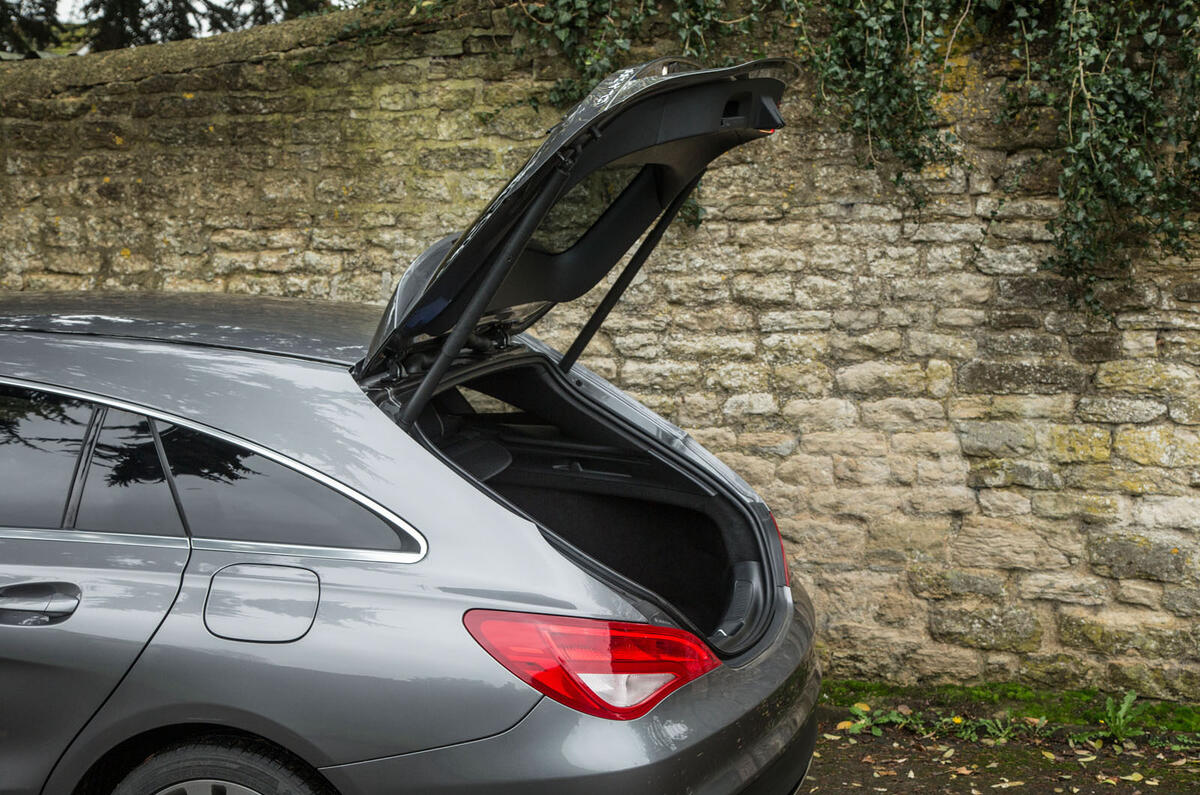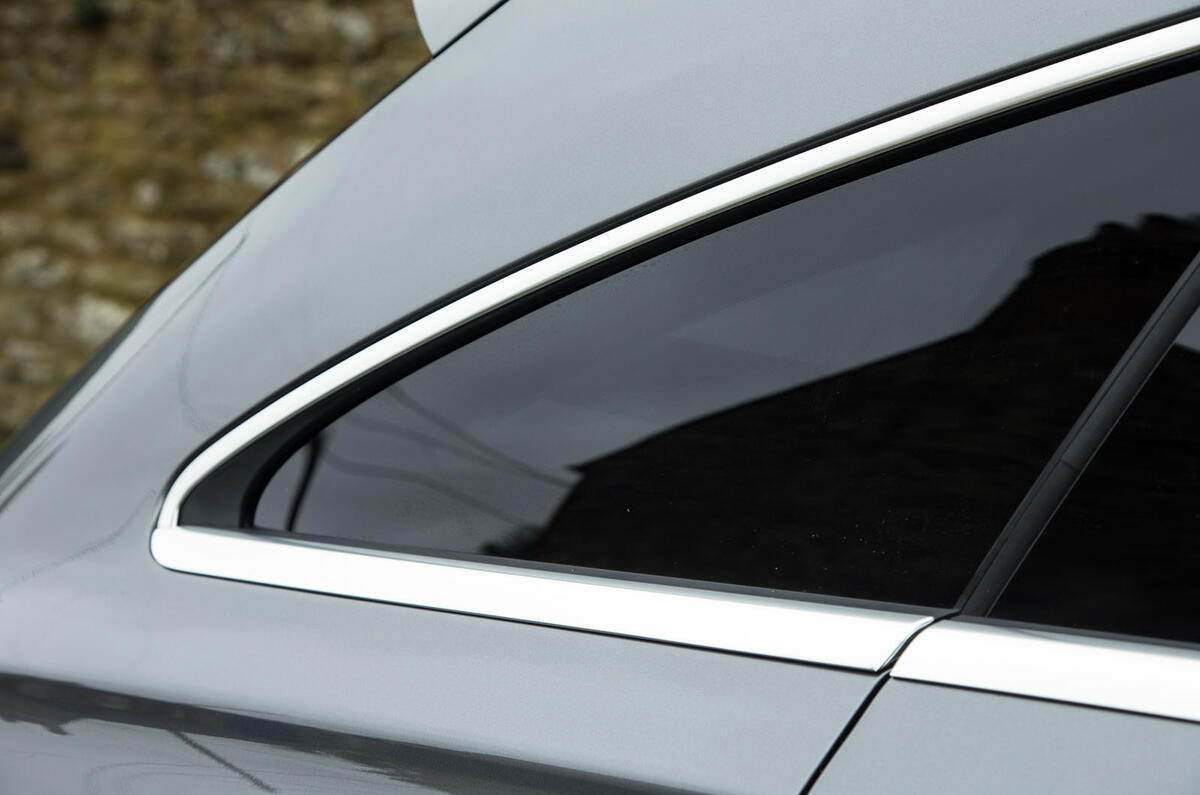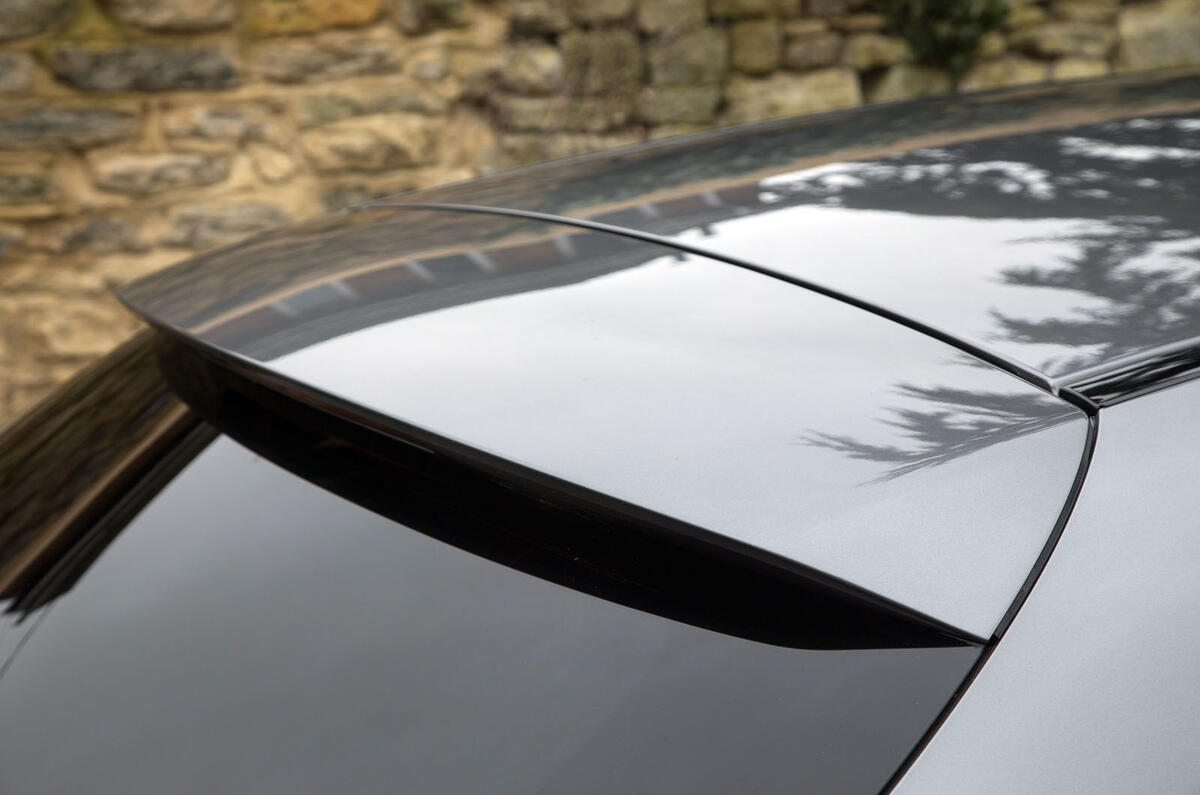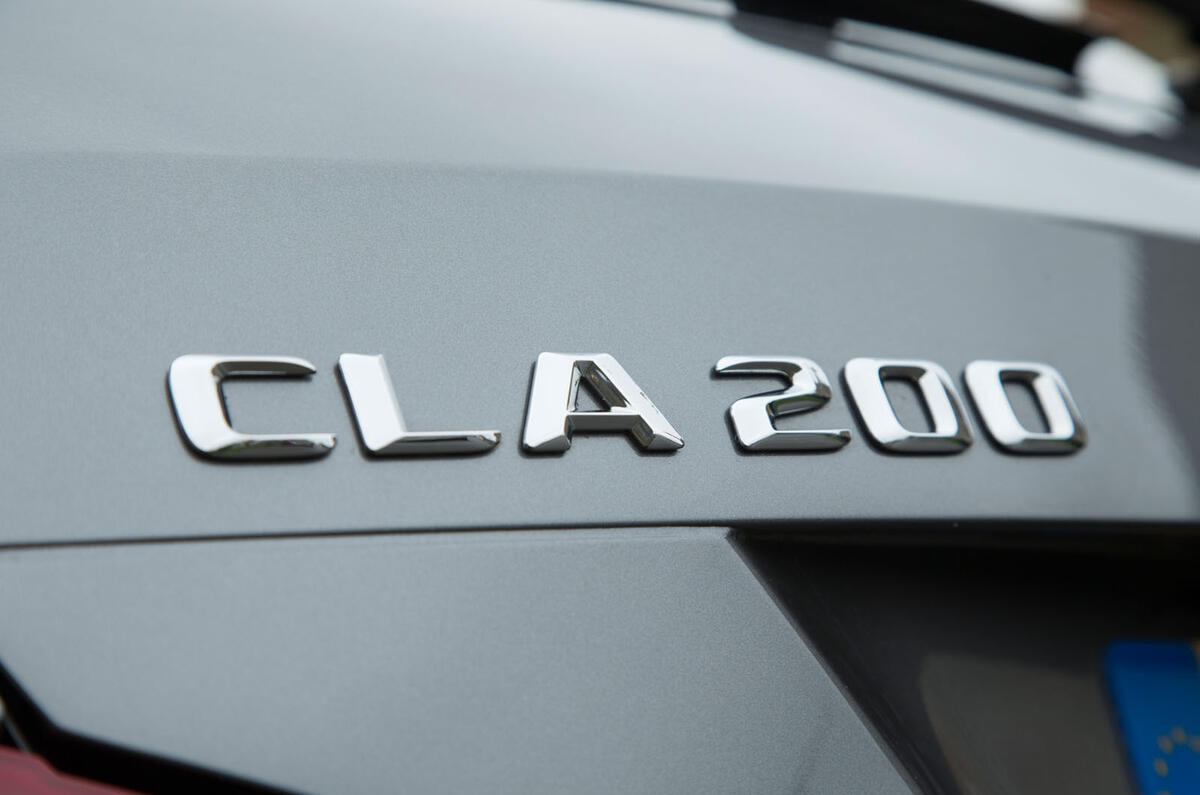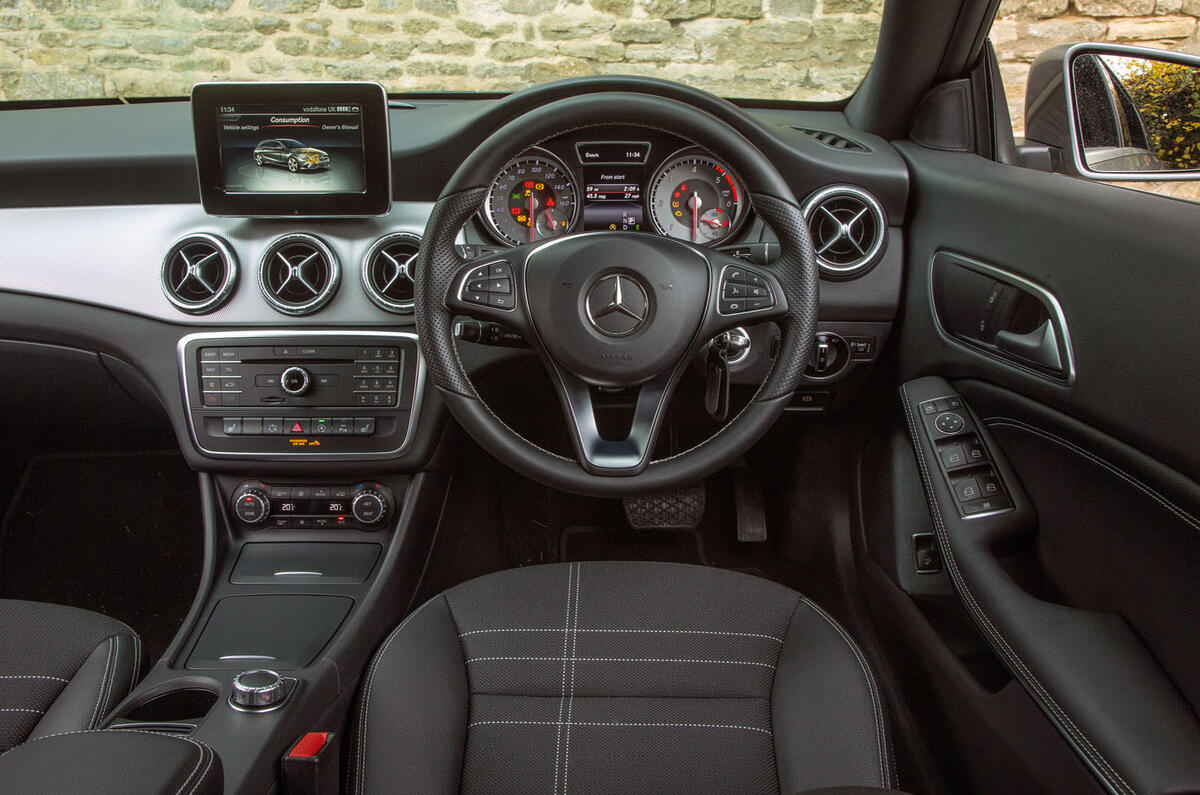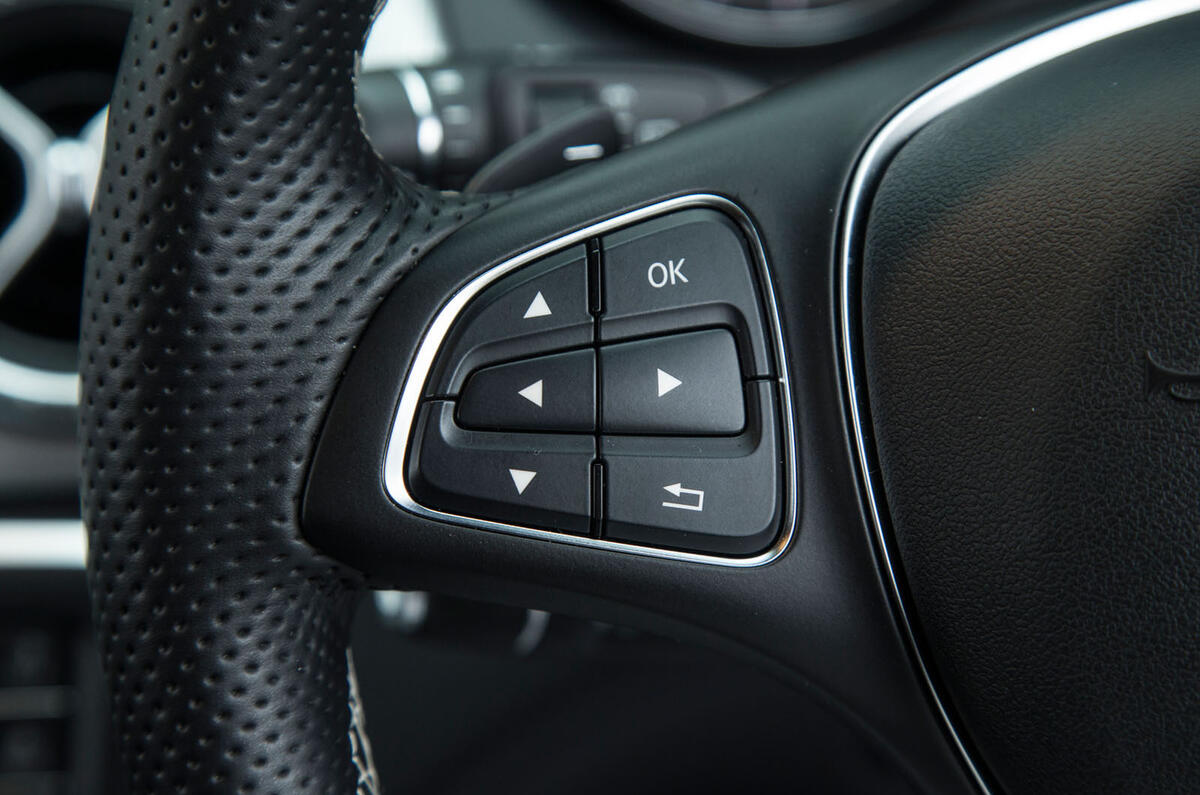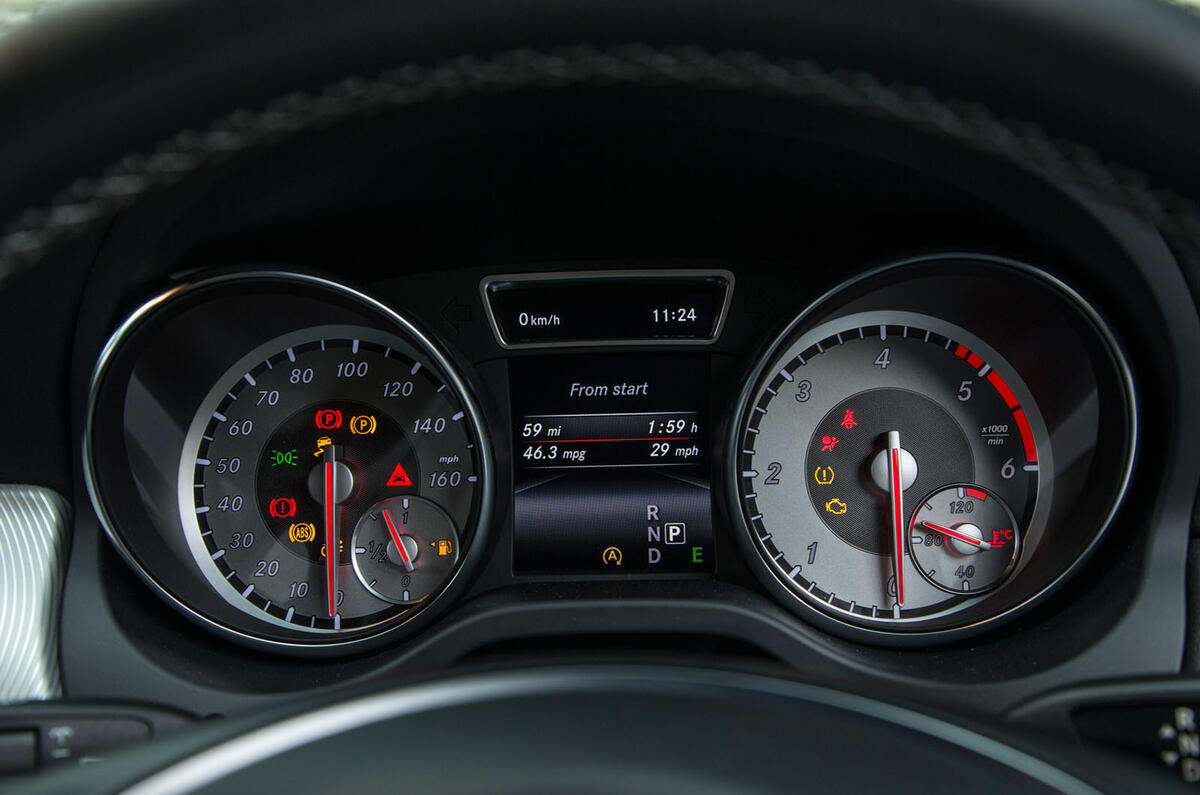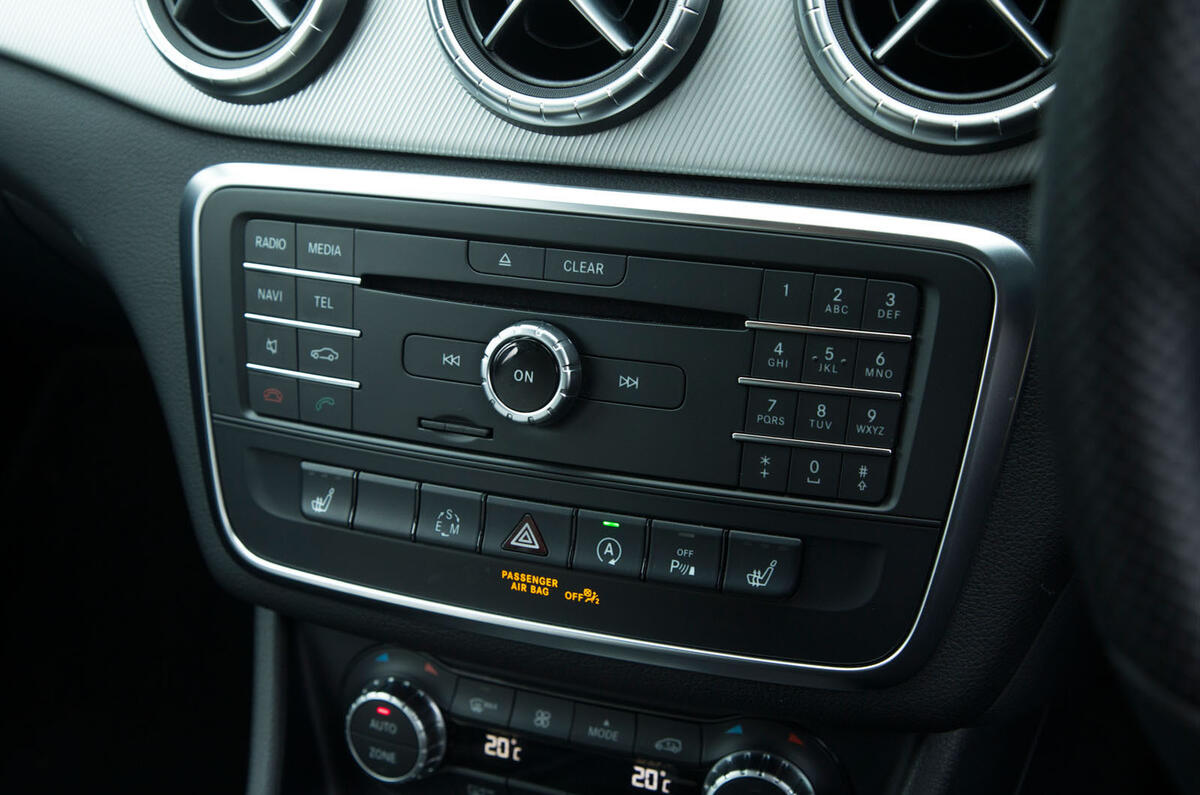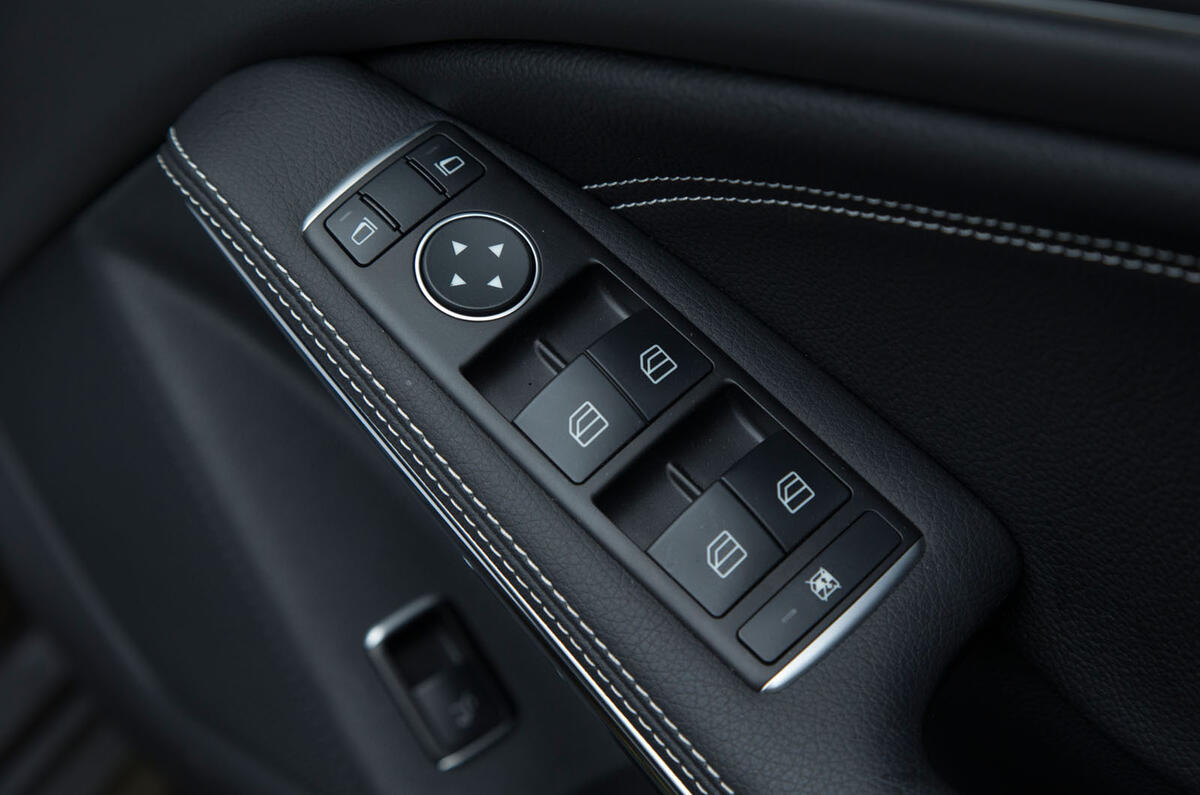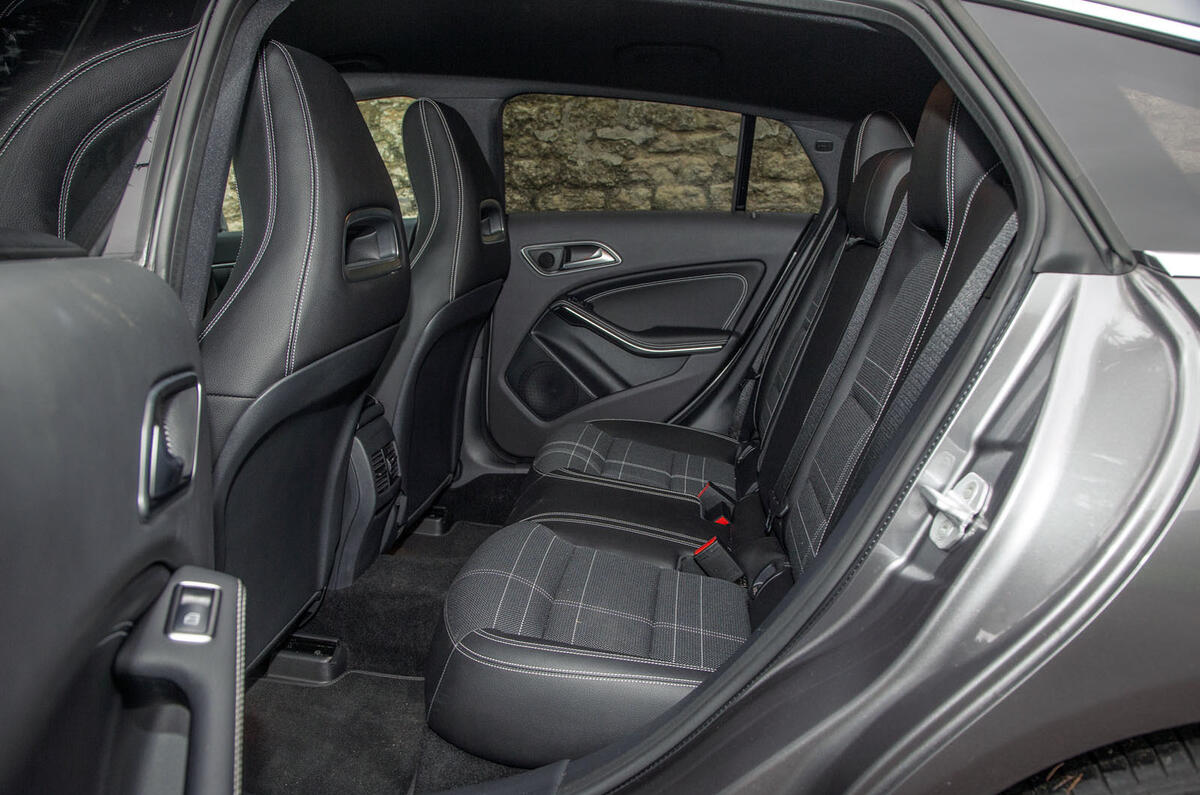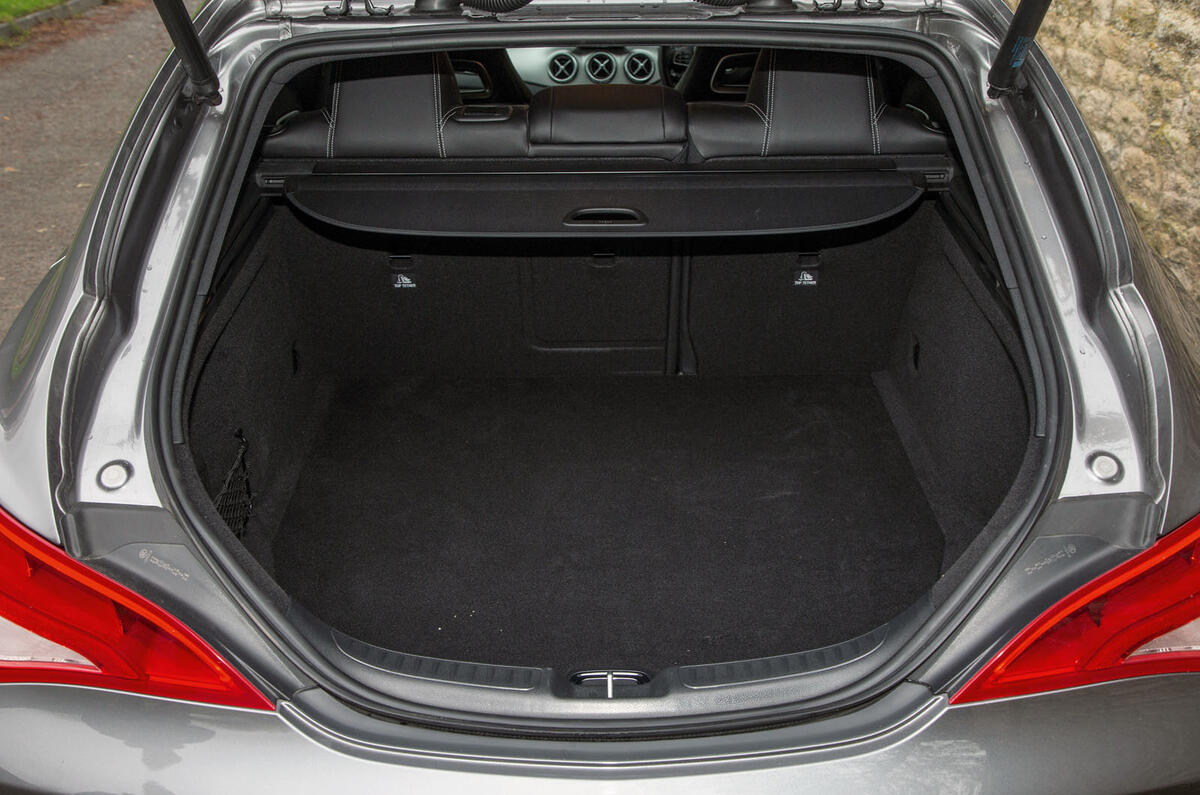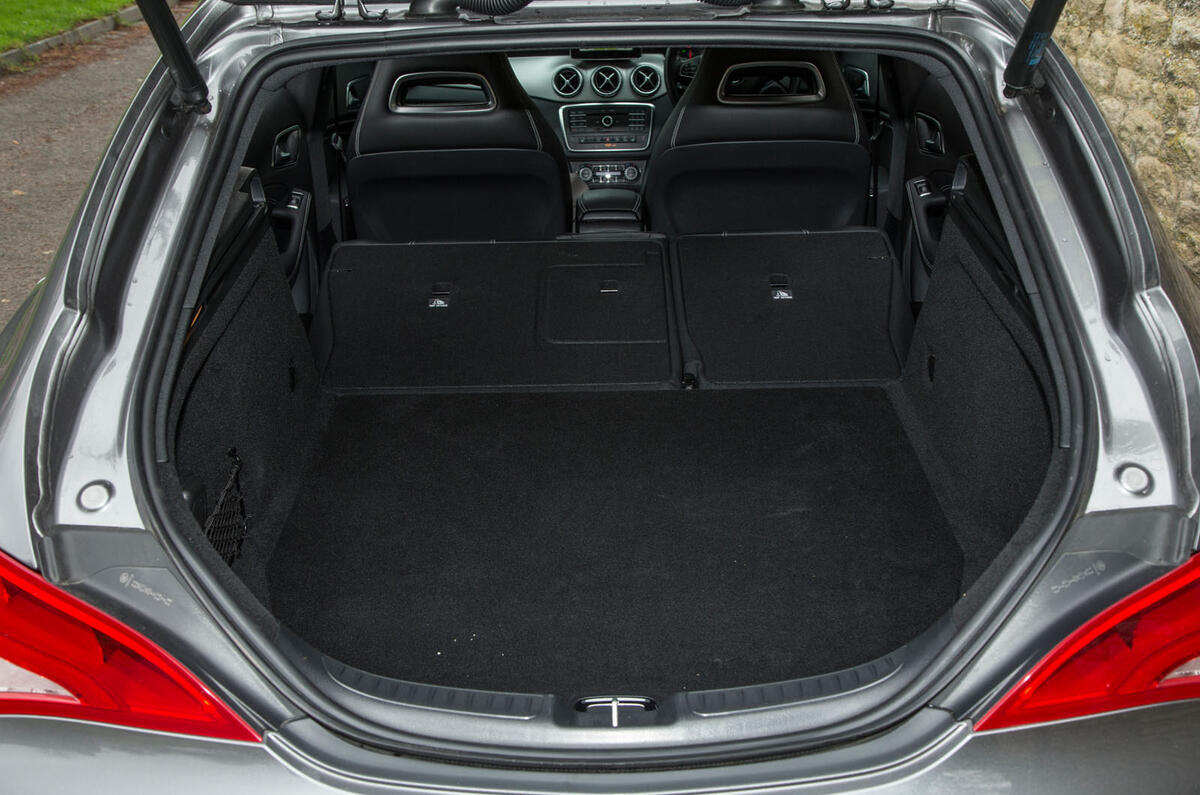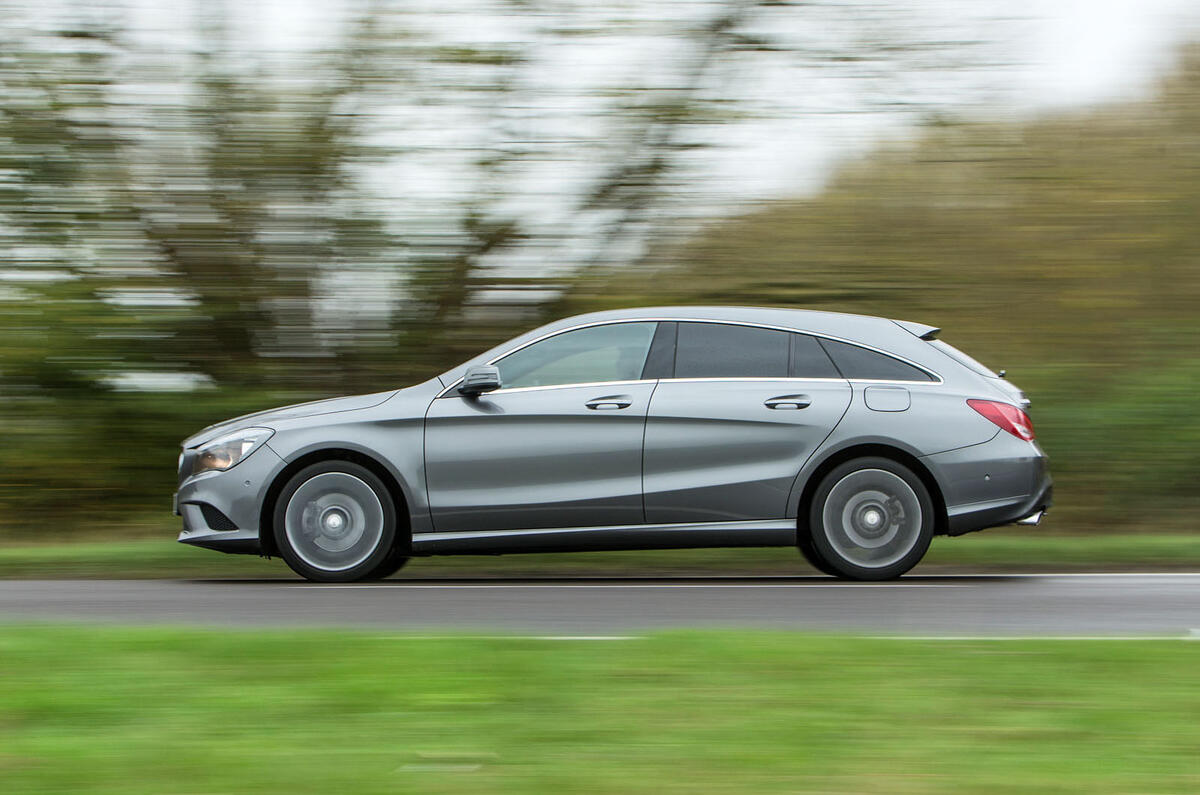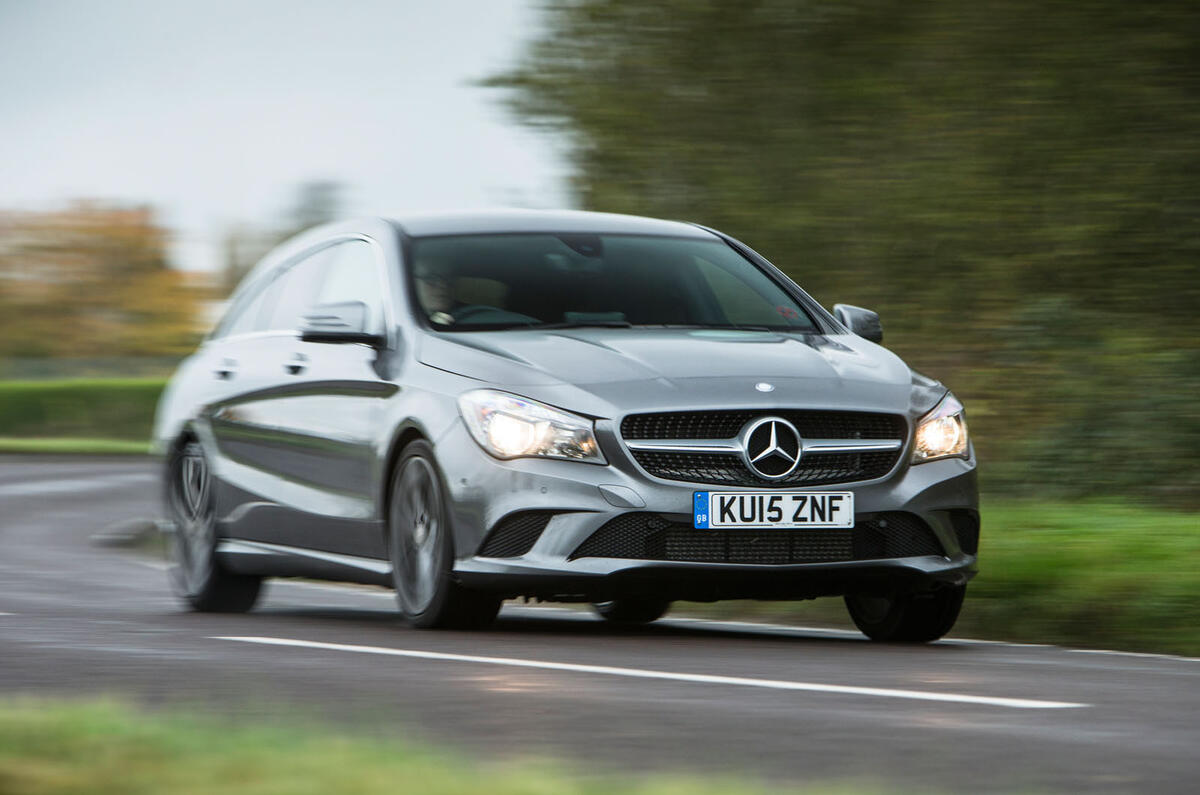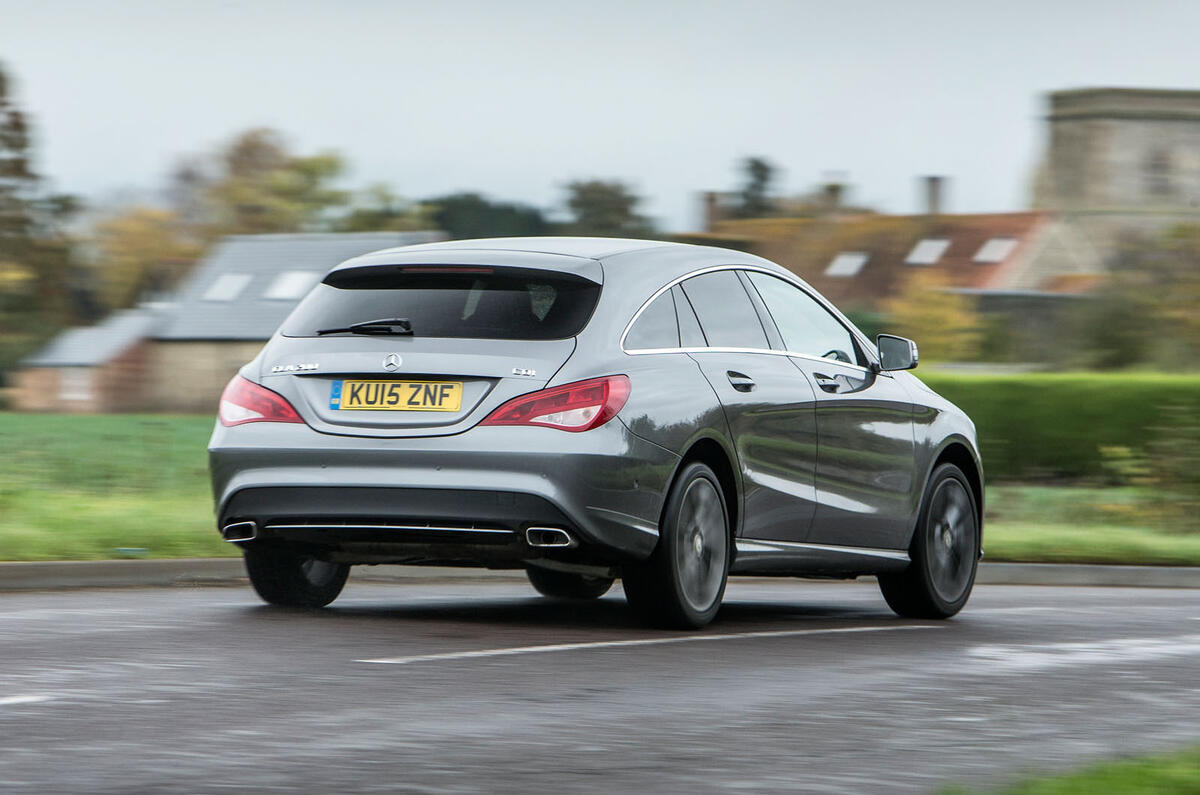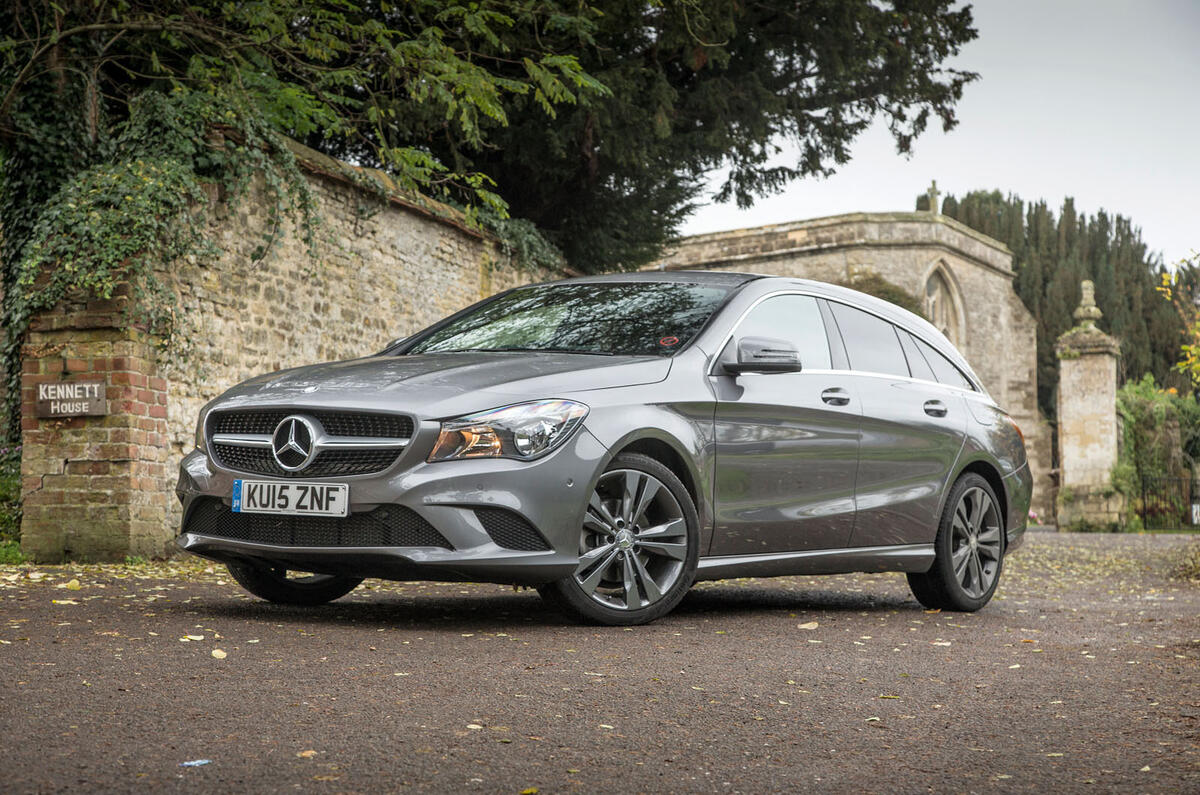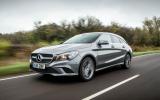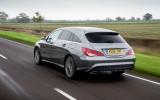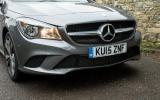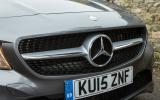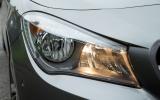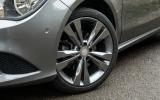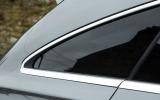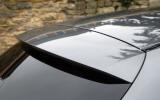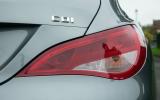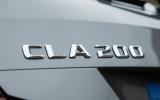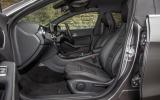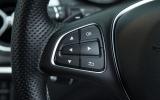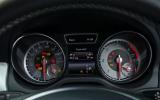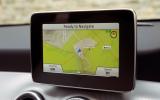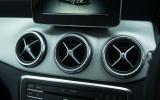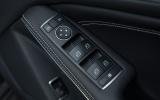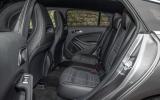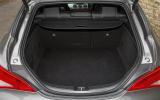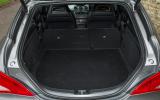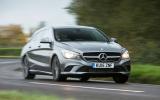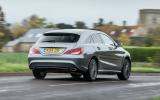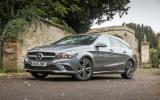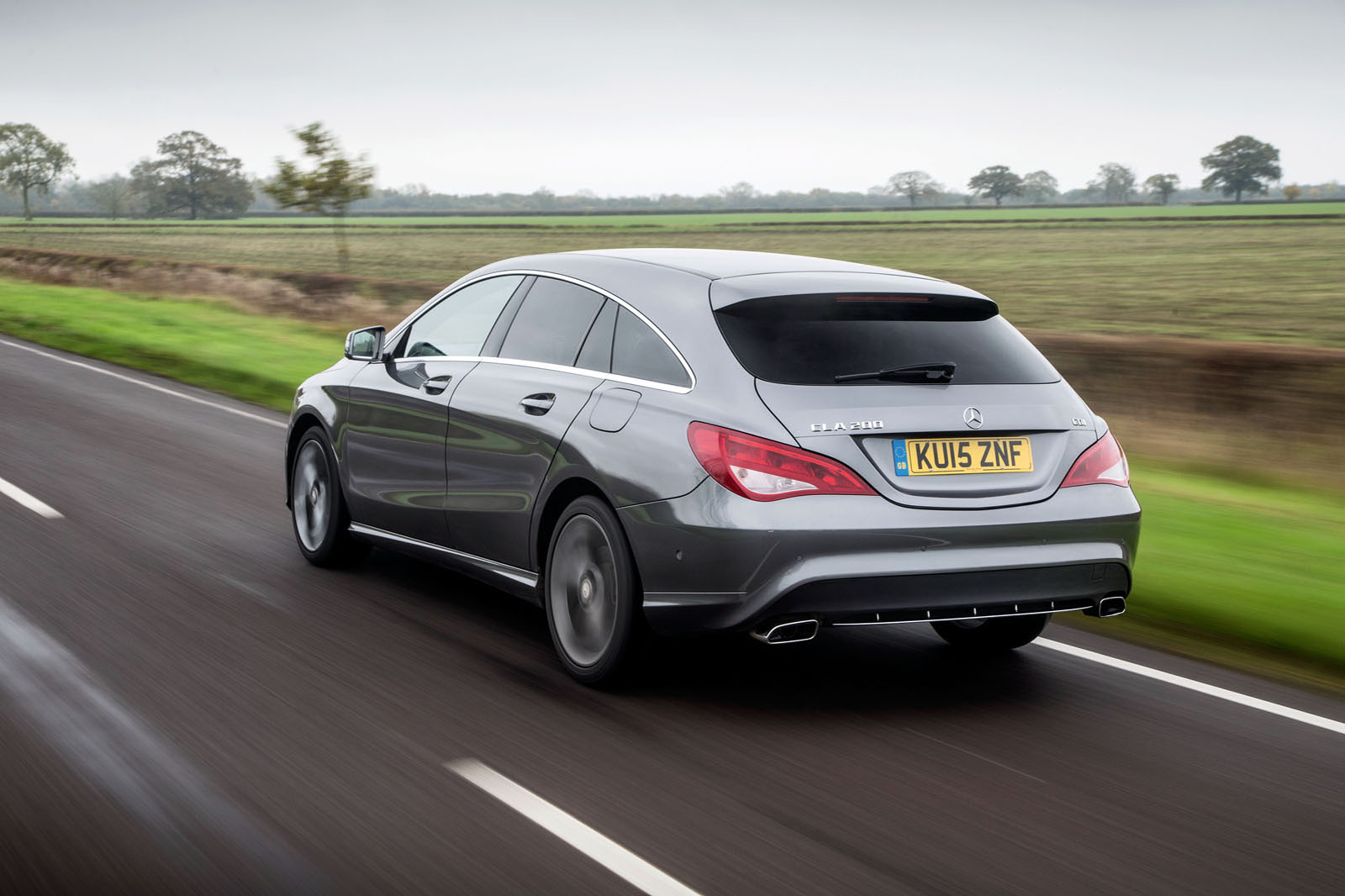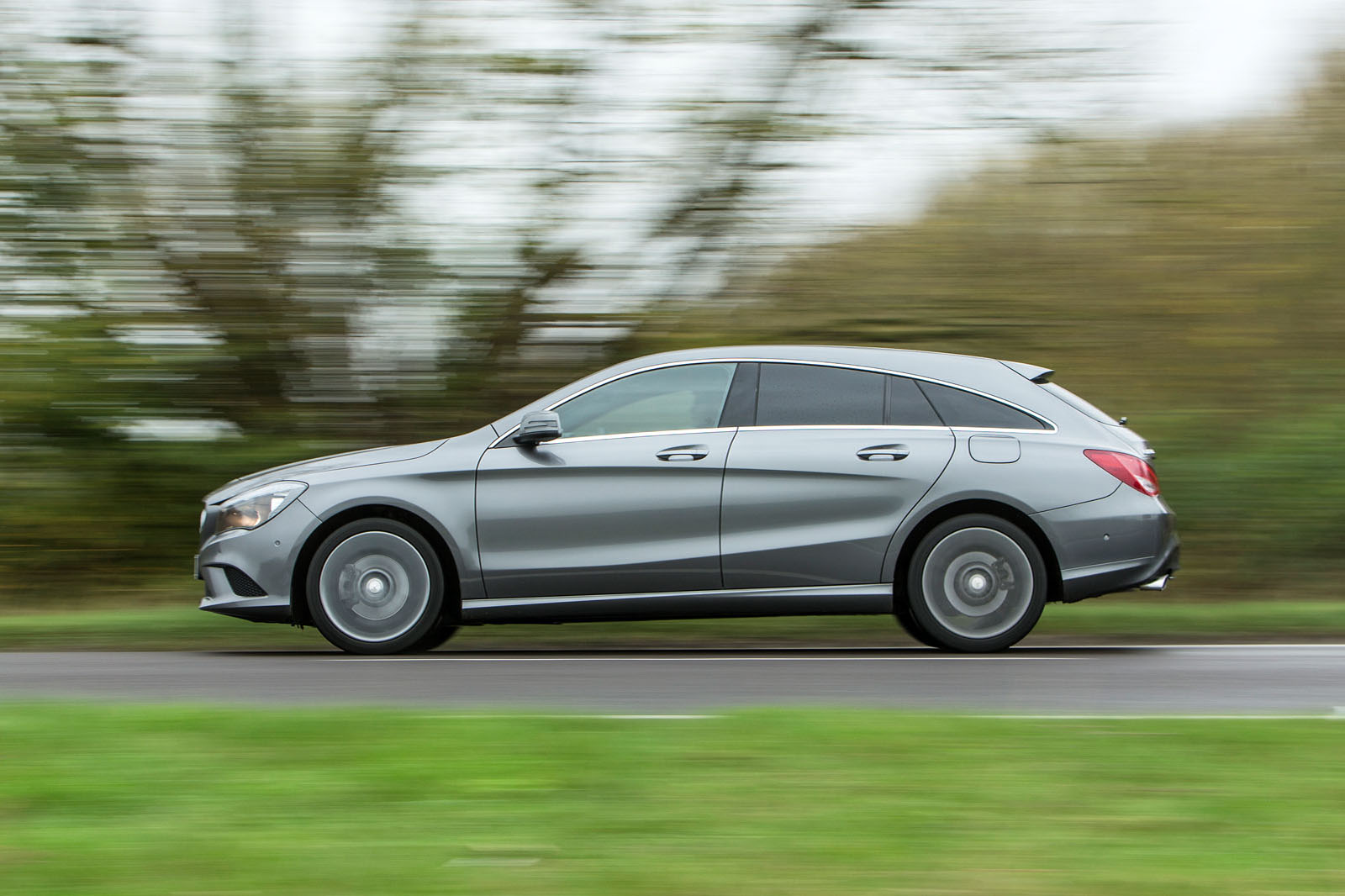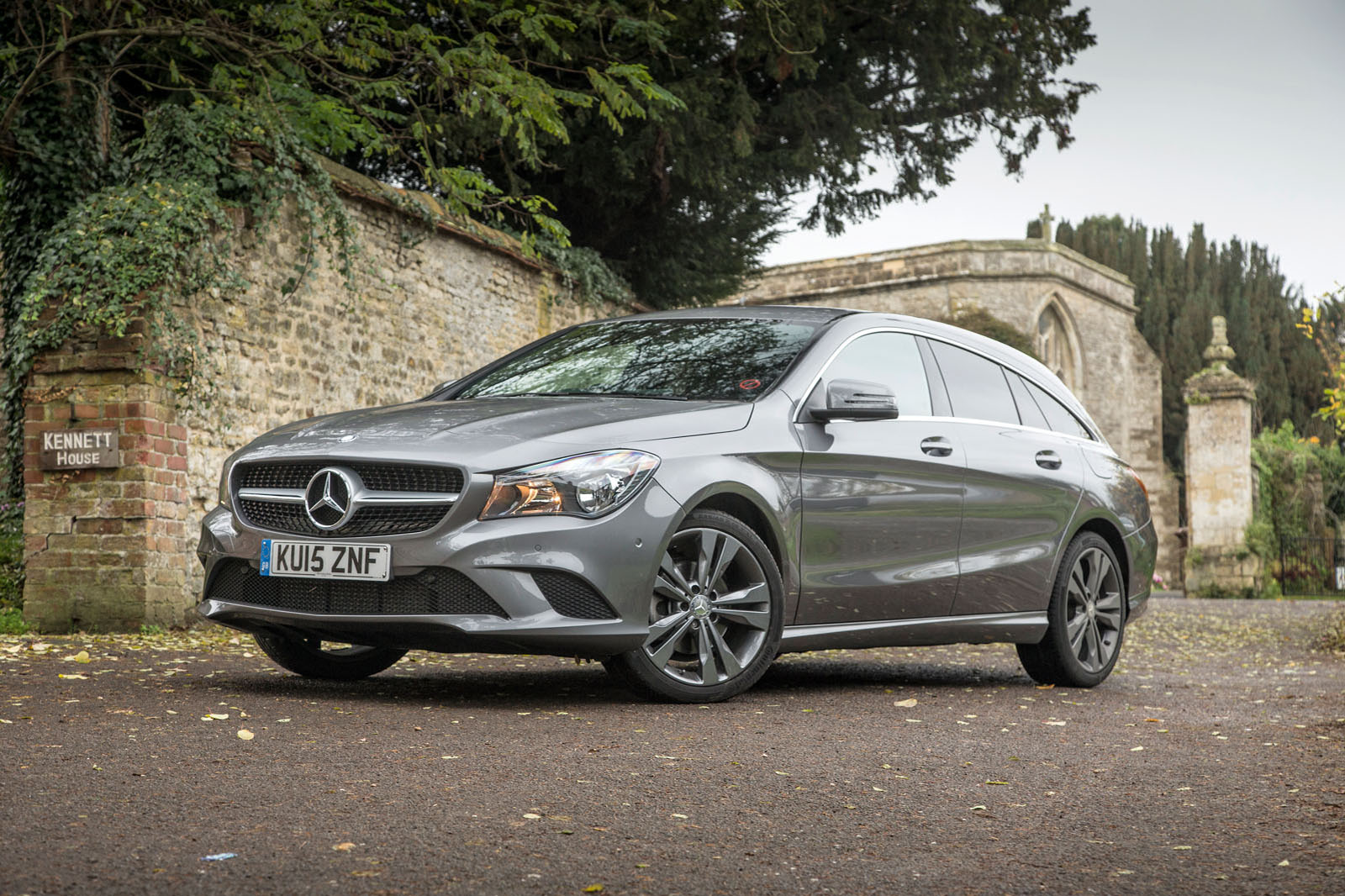Given that the Shooting Brake shares its wheelbase and overall length with the Mercedes-Benz CLA saloon and isn’t likely to match a more conventional wagon on outright boot space due to that steeply raked tailgate, we should first address how much estate car there really is on offer here.
Front-row occupant space is certainly competitive but, moving backwards, our tape measure recorded 660mm of typical rear leg room and just under 900mm of second-row head room.
The latter is particularly disappointing, given the 40mm gain claimed by Mercedes compared with the CLA saloon (which measured up almost identically for us on head room).
Regrettably, the difference made to the CLA’s passenger-carrying abilities is negligible. Integrated headrests and pronounced bolstering for the outer seats makes the back row useful for two occupants only – and smaller occupants at that.
Once you’re in, larger adults will find the car tighter on both knee room and head room than plenty of conventional five-door hatchbacks in the compact premium class.
But looking at the cargo bay will give prospective CLA Shooting Brake owners better news. Outright volume is about 100 litres shy of the estate car norm, at 495 litres with the seats in place and up to the window line. But that bald statistic actually does little to describe the usable space available.
Compared with, say, a Volvo V40 hatchback, the CLA Shooting Brake provides an additional 250mm of loading length behind the seatbacks. The car’s tapered hatchback and consequently narrow loading lip could make accommodating bulky items tricky, but there’s good boot width inside it, while 60/40 folding rear seatbacks split conveniently in order to make optimal through-loading space in a right-hand drive car (which you don’t get, incidentally, in an Audi A3 Sportback).
The rest of the CLA Shooting Brake’s cabin is carried over mostly unchanged from the saloon. You get slightly narrow but comfortable sports seats as standard and some appealing design touches such as red-accented instrument needles, wave-look silver fascia trim and feature air vents. The car’s driving position is good, save for a minor pedal offset, and its material quality levels are high.
It’s not often we get a chance to test a Mercedes that isn’t fitted with its full-house Comand multimedia navigation system, but the CLA Shooting Brake afforded one.
In entry-level Sport trim it gets Merc’s six-speaker Audio 20 radio/CD set-up, which sounds powerful and clear enough for most purposes. The Bluetooth phone connection is easy to establish but only produces averagely good call audio quality.
Our test car had Mercedes’ Garmin Map Pilot navigation system fitted — a reasonably priced solution (£495) with decent but not outstanding graphics, if a little slow to render.
The usability of the system is a tad confusing; the rotary controller is mainly only useful for the navigation menus and won’t allow you to navigate away to the radio and phone screens.
Upgrading to the Comand Online system is pricey at £1870, but it gets you an 8.0in control display, live traffic information and access to internet radio and social media channels via bundled apps. DAB digital radio is another £420.
There are three trim levels to choose from - Sport, AMG Line and, confusingly, 250 AMG. That comprehensive roll-call of kit extends to safety equipment, which means you shouldn't necessarily need to add a load of optional extras when speccing your CLA.
The entry-level Sport trim comes equipped with 18in alloy wheels, comfort suspension, auto wipers, parking sensors and cruise control, while inside includes an infotainment system complete with a 7.0in screen, Bluetooth, USB port and smartphone integration, sports seats covered in Artico leather upholstery and dual-zone climate console. AMG Line models get 18in alloys, LED headlights, lowered suspension, and part leather/part-microfibre upholstery, while the 250 AMG models receive speed-sensitive steering, sports suspension, a modified stability system, Garmin sat nav and heated front seats.
Those lucky enough to opt for the CLA 45 will find that the AMG comes with an aggressive bodykit, interior styling and decals, a sports exhaust, a seven-speed auto sports transmission complete with paddle shifters, and AMG performance seats.



